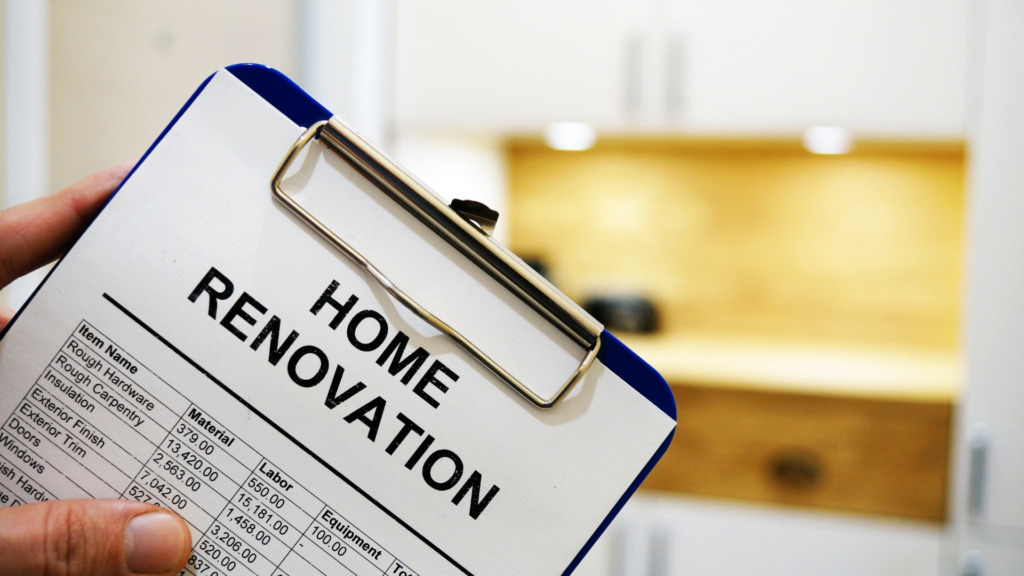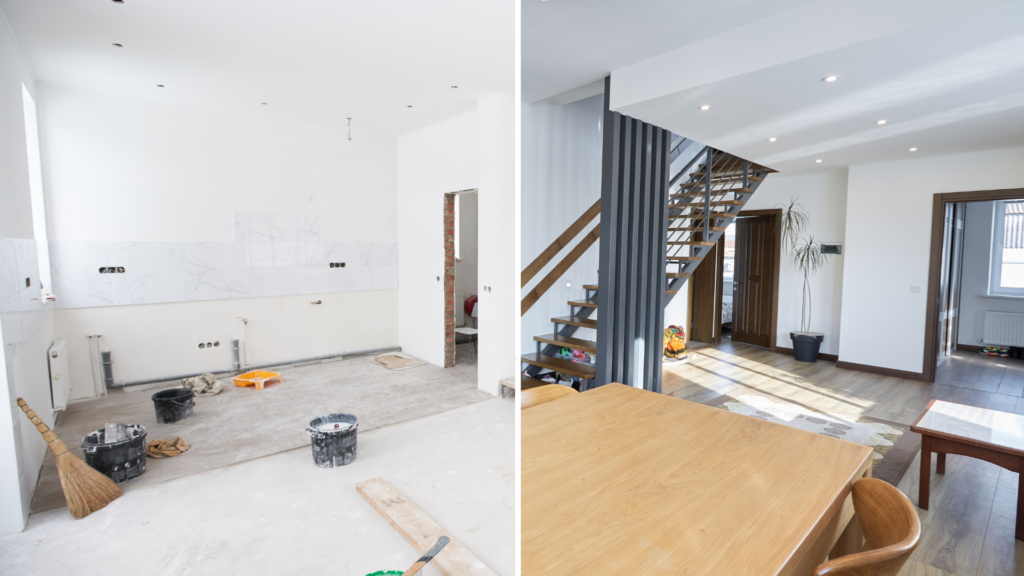Renovating your home can be an exhilarating experience that breathes new life into your living space. Whether it’s a minor update like repainting walls or a major overhaul such as adding a new room, each project requires meticulous planning, both in terms of design and finances. However, with the excitement comes the daunting question: should […]
Renovating your home can be an exhilarating experience that breathes new life into your living space. Whether it’s a minor update like repainting walls or a major overhaul such as adding a new room, each project requires meticulous planning, both in terms of design and finances.
However, with the excitement comes the daunting question: should you take a personal loan to fund these renovations? This article delves into the essentials of home renovation financing, helping you navigate the decision with clarity and confidence.

Home renovation encompasses a wide range of projects, from cosmetic updates to comprehensive structural changes. It’s a process undertaken for various reasons – to enhance the home’s aesthetic appeal, improve functionality, or even increase its market value.
Inspiration for these transformations is plentiful, with homeowners often turning to platforms like Pinterest to explore styles ranging from sleek contemporary designs to rustic Balinese retreats.
Renovations can significantly alter the feel and functionality of a space, making understanding their scope and potential impact crucial before diving into the financial aspects of bringing these visions to life.
The journey to transforming your home begins with a vision. Perhaps your kitchen feels outdated, or your growing family needs more space.
Platforms full of design inspiration can spark ideas ranging from the minimalistic to the extravagantly themed. This initial stage is crucial for setting goals and expectations for the project.

An accurate estimate from a trusted contractor is your next step, laying the groundwork for financial planning. It’s essential to prioritize quality over lower costs that might compromise the renovation’s outcome.
Choosing the right contractor is as crucial as planning the renovation itself. Assessing your financial readiness is paramount; if the project’s cost overshoots your budget, it might be wise to delay. For significant overhauls, considering a renovation loan becomes an integral part of the planning phase.
When it comes to financing your home renovation, the market offers several avenues, each with its own set of benefits and considerations.
Secured loans, such as mortgage refinancing, present a viable option for those needing substantial amounts, offering lower interest rates due to the collateral involved.
However, unsecured personal loans become appealing for smaller projects or when speed is of the essence. They are favored for their straightforward application process and the lack of necessity to leverage your home as collateral.

This flexibility allows homeowners to make swift decisions and begin their renovation projects without extensive delays.
Good Debt: Investing in your home through renovations can be seen as good debt, especially if these improvements lead to an increase in the property’s value.
Long-term Savings: Opting for renovations that incorporate green technology or more efficient systems can result in significant savings over time, reducing utility bills and environmental impact.
Enhanced Living Standards: Renovations can drastically improve the comfort, functionality, and safety of your home, making it a more enjoyable place to live.

Higher Interest Rates: It’s essential to remember that taking out a new loan, especially an unsecured personal loan, may come with higher interest rates, increasing the overall cost of your renovation.
Risk of Overextension: Financing renovations beyond your means can lead to financial strain, making it crucial to assess your project’s necessity and scale carefully.

Let’s consider the example of Mr. and Mrs. Lim, who decided to renovate their family home in the suburbs. The Lims took a personal loan of RM80,000 to fund the addition of a new living room and update their kitchen.
They chose a personal loan because of its quick processing time and lack of collateral requirements. The renovation increased their home’s value by 20%, a significant return on investment.
However, they faced challenges with budget overruns due to unexpected structural issues, highlighting the importance of careful financial planning and budget allocation.
Taking out a loan for home renovation should be carefully considered. Here are scenarios when it might make sense:
Scenario: Ahmad and Siti wanted to update their small kitchen. They chose a personal loan because it was quick and didn’t require their home as security. The loan fit their budget well, allowing them to start renovations fast.
Scenario: Kumar found a loan with a low-interest rate that matched his budget, allowing him to renovate his bathroom without financial stress. He chose this after comparing several options.
Scenario: Mei Ling and Han needed to fix their leaky roof to prevent more damage. A personal loan gave them the fast cash they needed, which was a smart move to avoid higher costs later and add value to their home.

On the other hand, you might want to look at other options if:
Scenario: Farah and Ali planned major renovations on an old family home. The project was large, so they went for a home equity loan, which had lower rates and longer payback times than personal loans.
Scenario: Raj decided on a big addition to his house but wasn’t in a hurry. He got a home equity line of credit, which let him use his house as collateral for a lower rate, offering him the flexibility he needed.
Scenario: Nurul and Amir saved money for their dream living room and kitchen makeover. In a year, they had enough to pay without borrowing, skipping the extra loan costs.

For those hesitant to take on additional debt, there are alternative strategies to consider.
Minor renovations and DIY projects can often be achieved with smaller budgets and a bit of creativity. Leveraging savings or even considering interest-free payment plans for materials can reduce the financial burden.
Hardware stores like Mr. DIY, Spotlight, Home Essentials, and Global Tools offer a wide range of affordable materials for those looking to undertake minor updates themselves.

The decision to finance home renovations with a loan should come after thoroughly analyzing the costs versus the anticipated benefits. Not all renovations will lead to an increase in home value, and the allure of transforming your space must be weighed against the reality of loan repayments.
It’s crucial to consider whether the renovations meet practical buyer criteria or if they’re more aligned with personal preferences that might not translate to added market value.
Thinking about taking a loan for your home renovation? It’s important to look before you leap.
Renovating your home can make it nicer to live in and might even save you money down the road. But, not all changes will up your home’s value. Loans can help you get started sooner, but remember, they’re not free money. You’ll need to pay back more than you borrowed.
So, plan carefully. Make sure the renovations are worth the cost and hassle of a loan. Sometimes, it’s smarter to save up and pay in cash, or maybe fix up what you can on your own. Whatever you decide, think it through to make your home and wallet happy.
Now, we have a bonus for those who read this article to the very end. What if you could secure the funds for your home renovation without applying for a personal loan?
Imagine accessing substantial capital without borrowing from banks, living the next decade free from the worries of personal loans or any other financial commitments.
Certainly, after reading about the pros and cons above, you may have reservations about securing a ‘better’ loan. However, we’ve assisted and consulted with more than 20,000 Malaysians on enhancing their financial well-being. Some have even halved their financial obligations using our recommended strategies!

Suppose you’re keen to learn how to acquire significant capital without applying for bad debts like personal loans and how to reduce your current commitments. In that case, we’re eager to share a portion of this knowledge for free. All you need to do is CLICK THIS LINK.
Ready to take the next step, or seeking more personalized advice? Reach out to us HERE and speak to our Success Managers. Our experienced experts are always willing to assist.
We hope this article has been insightful, and we’re excited to help you achieve your goals. Feel free to share this article with others who might benefit from it as well.